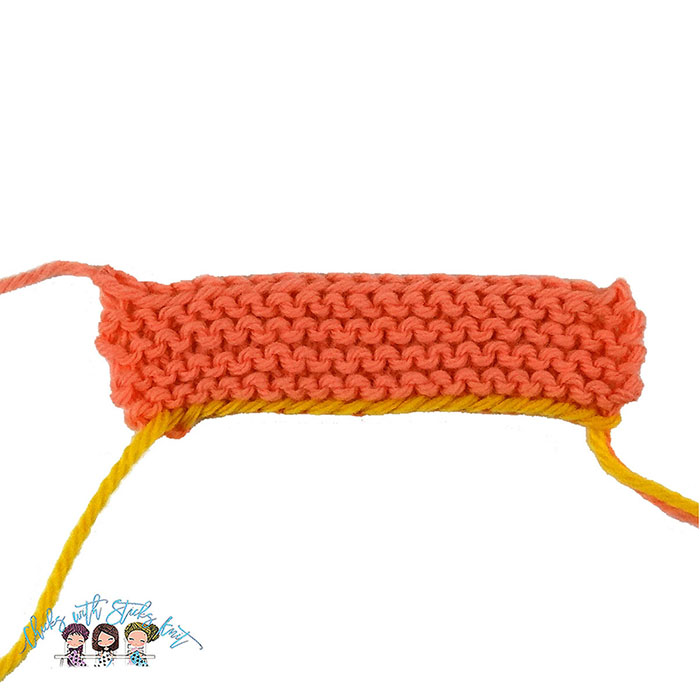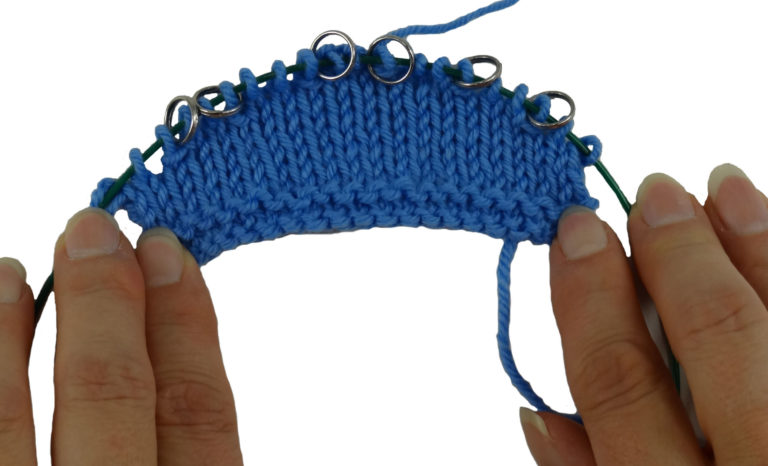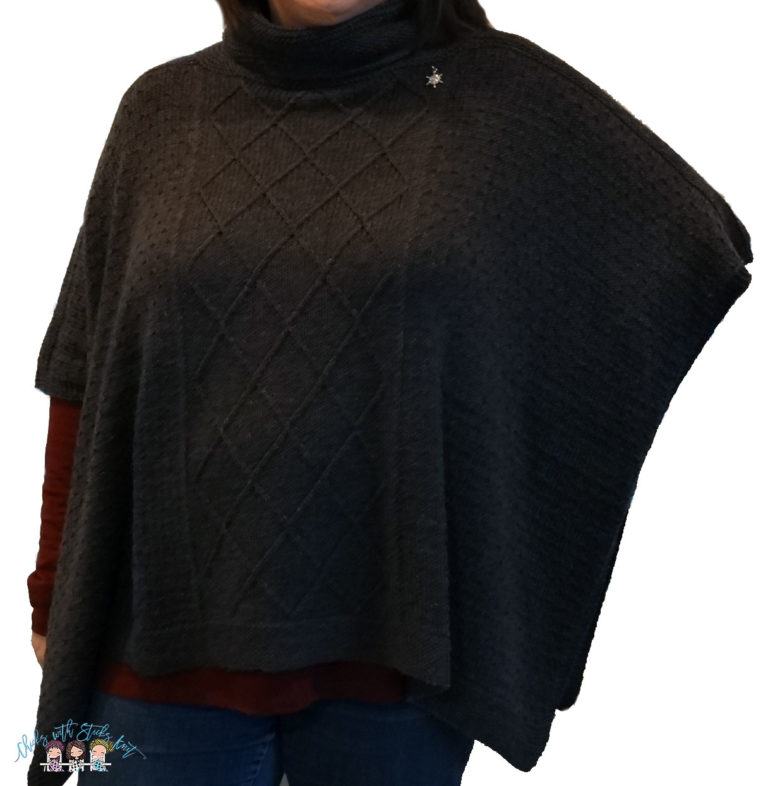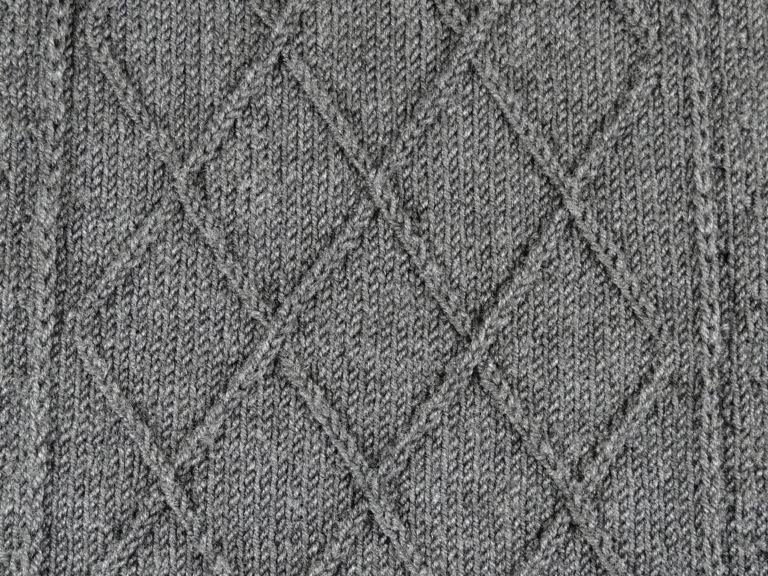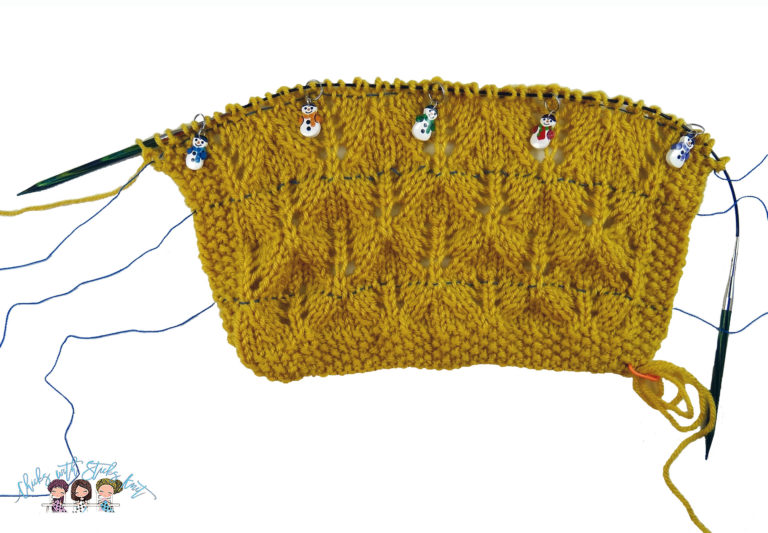How-to Pick-Up Stitches Using a Tunisian Crochet Hook
Finishing a top down sweater usually involves picking up your stitches on both fronts and all the way around the neck to create a nice border that will allow the sweater to lay nicely when you wear it. Usually this is done in garter stitch but there are other stitches used as well. This is the third part of a series I have written on how to knit a top down sweater. You can find How to Cast on for Your Top Down Sweater, and a Step by Step Guide on How to Complete the Sleeves on Your Top Down Sweater by clicking on these links.

Usually the final step of any top down sweater is creating a nice border. Picking up stitches can be tricky, but my friend Laura has shared a technique with me that will make this much easier for you. There is a tool called a Tunisian crochet hook. It comes in a set with interchangeable cables similar to an interchangeable knitting needle set. The advantage is that the hook makes it easier to pull the yarn through without dropping it. Generally, people use a knitting needle with a long cable when they pick up stitches but it can be difficult to keep the yarn on the needle as you pull it through.
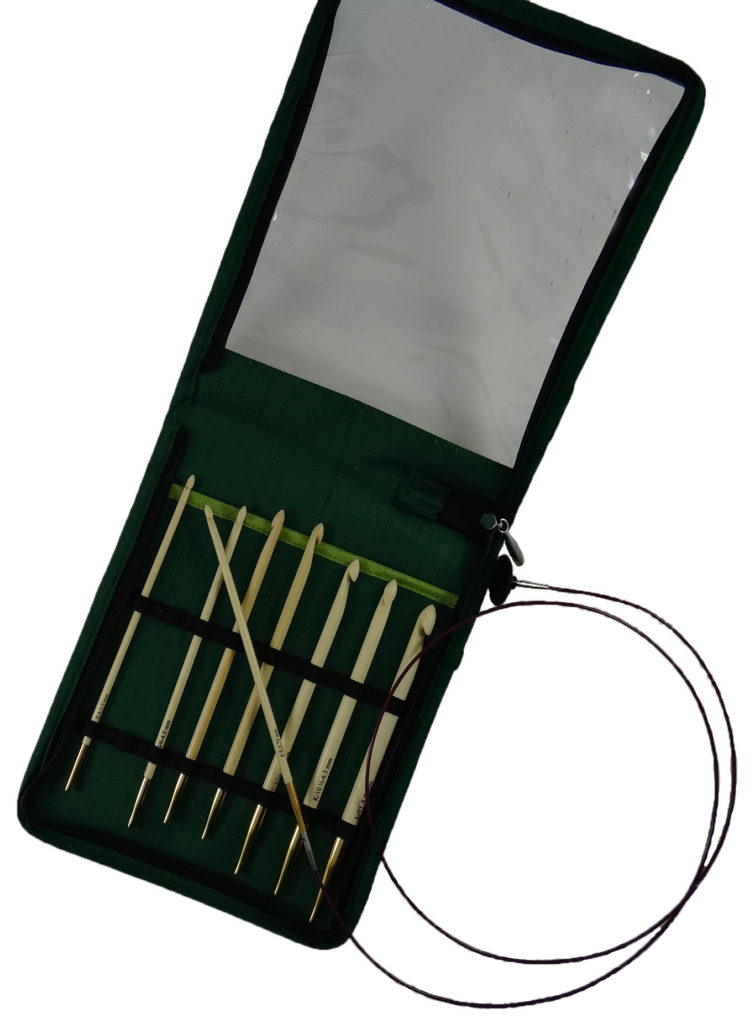
The first thing to do is use markers to divide the edge into sections by using stitch markers. It is a very long way to go up one side of your sweater around the neck and down the other side. Using markers to divide it helps to keep track of how many stitches you have in each section. Try to make sure you have the same number of stitches on each side. More stitches on one side will be noticeable when you knit the border.
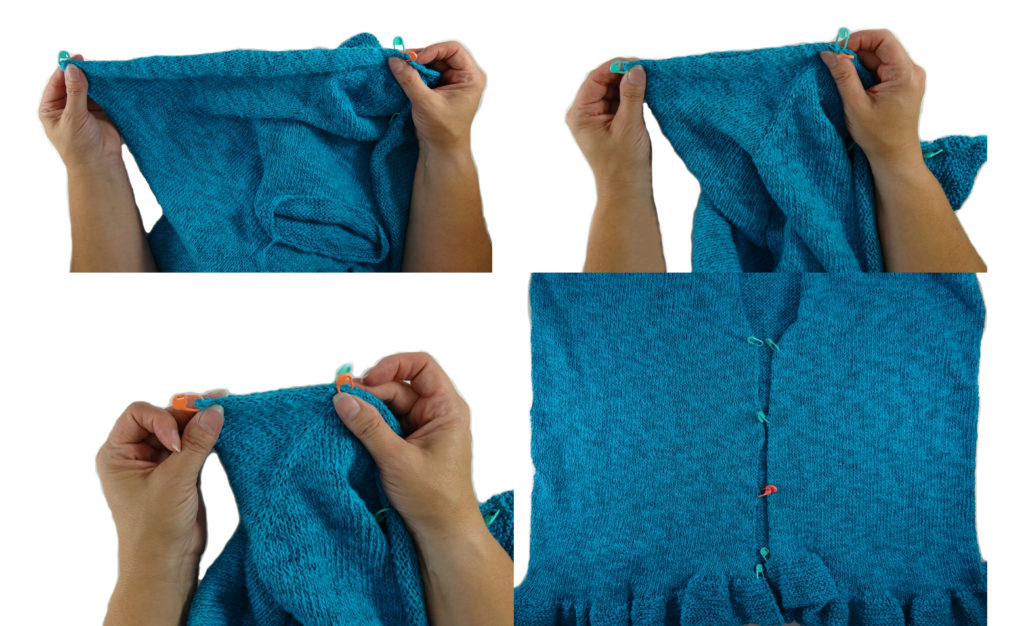
Always pick up stitches on the right side of the fabric. It creates a ridge on the back which you do not want that on the front of your work. Pick a hook smaller than your knitting needle so that you don’t stretch your work out. When inserting the needle on the edge be sure to get both legs of the stitch. When inserting the hook there should be two loops on the needle. This will create more stability at the edge. Wrap your yarn and use the hook to pull it through. This will collect stitches on the hook, and they will eventually push down onto the cable.
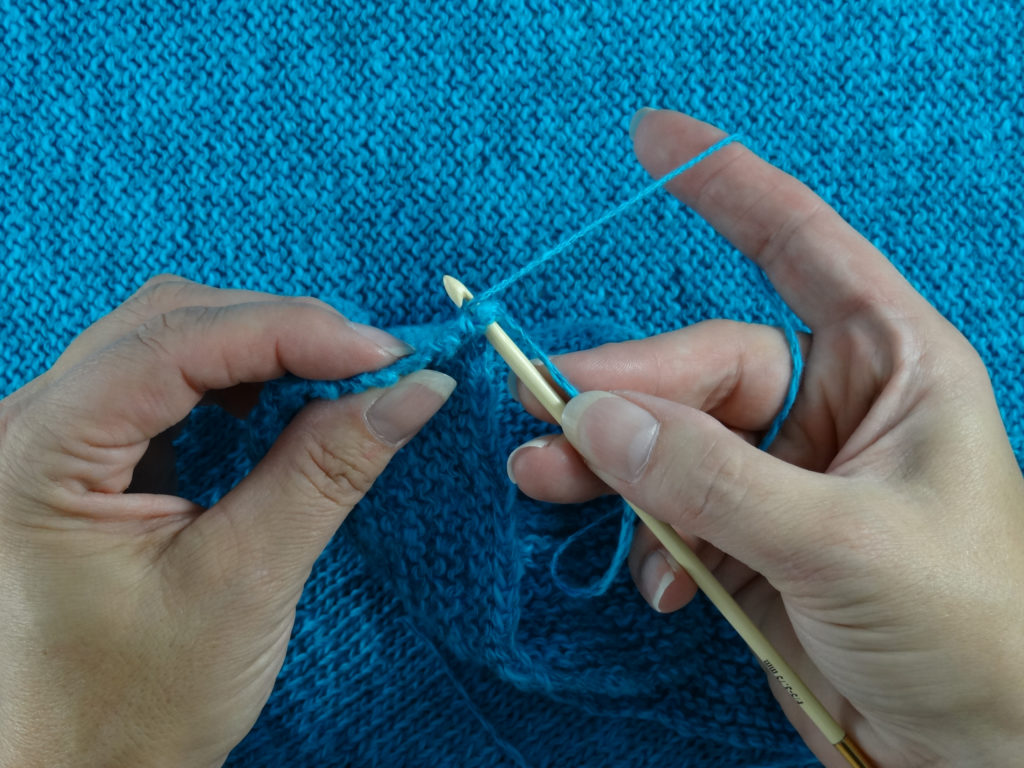
The pattern may tell you how many stitches to pick up or it may just say something like “pick up three stitches for every four rows of the pattern” for example. In this case it does not give you the exact number of stitches to pick up, but you should follow the guideline. (Please note this is a guideline and you can use your best judgement.) If the pattern were to say, “pick up one stitch every three rows” then I will skip two rows. The key is consistency. Conversely, you also do not want to pick up too many stitches as this will create a ruffle and your sweater will not lay flat.
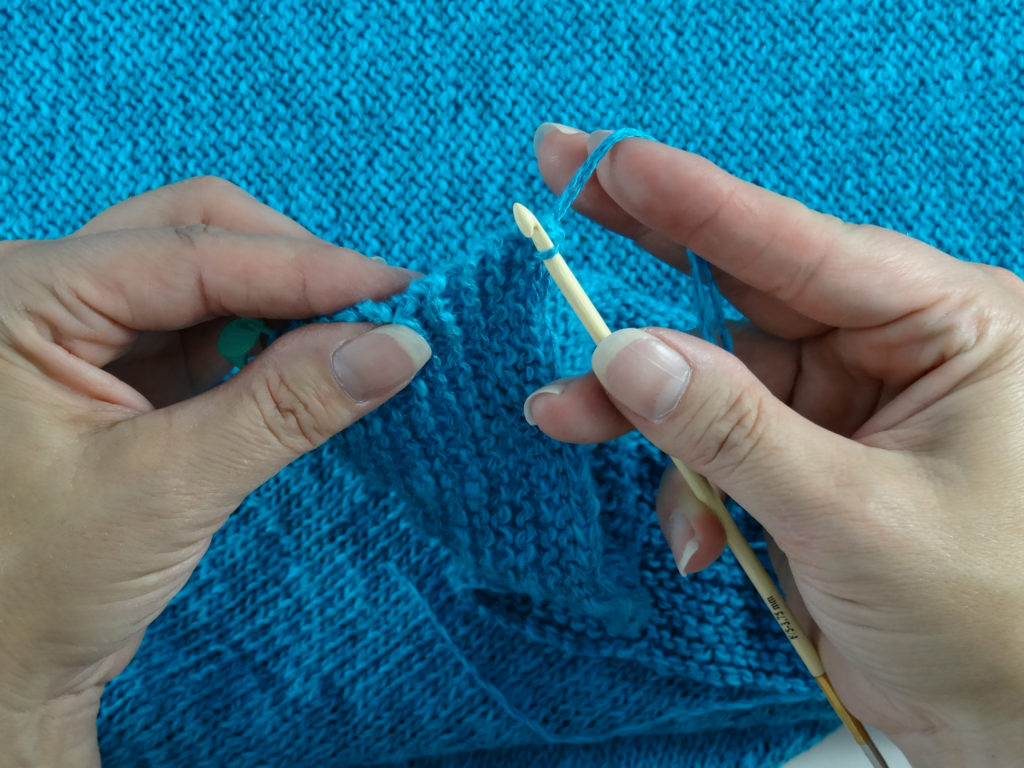
Some sweater patterns I have done will begin with a provisional cast on around the collar. This keeps the stitches live so you can knit them in the opposite direction. If the pattern instructs you to do this type of cast on, you will need to remove your waste yarn and put your stitches on a needle. You might prefer to do so before starting to pick up the stitches so that when you get to the collar section you can just knit them. With this type of cast on you don’t need to pick up stitches, they are already live and ready to knit. If you don’t have a provisional cast on around the collar just continue picking up stitches. My advice would be to pick up one stitch in every row around the collar.

Once you have completed picking up all the stitches all the way around the two fronts and collar you are ready to knit your border as the directions indicate. Simply replace your Tunisian crochet hook with a knitting needle, screw the same sized needle tip to the other end of the cable and you are ready to go. One other piece of advice I would like to give you on picking up stitch’s is don’t pick up a stitch where you have a large hole, as this will only make the hole bigger. If there is a hole for some reason it is best to skip that spot and find a spot adjacent to it. You will be much happier with the results.
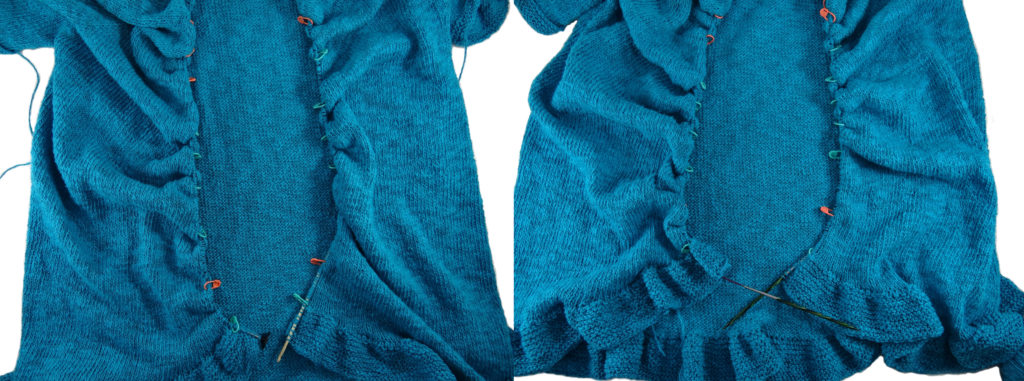
Picking up stitches can be challenging but using Laura’s method, as I have described here, will make it easier. Picking up stitches is an important skill to have as many projects call for it. The more you practice, the better you will become and the better you become, the more your projects will look professionally finished. It takes a long time to knit a garment. Learning new tips and professional finishing techniques will help your finished sweater look the way you dreamed.
Knit with Love my Friend,


